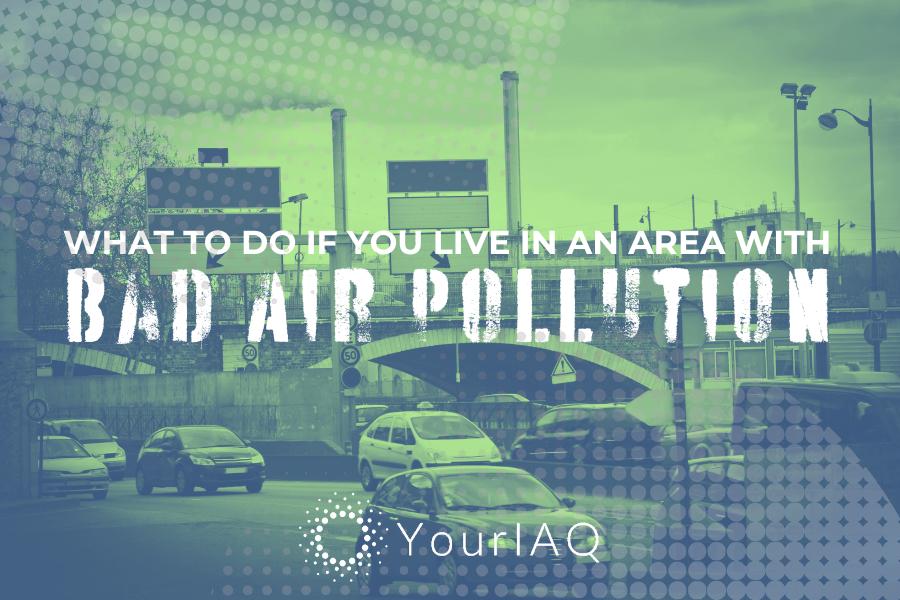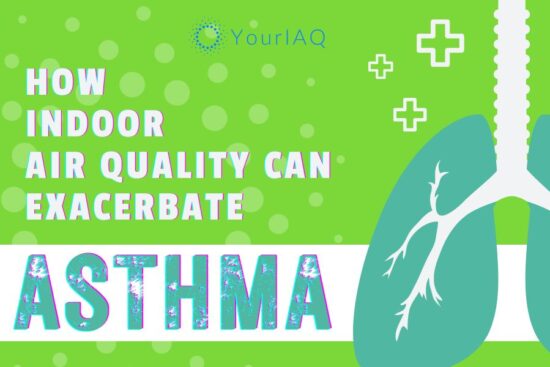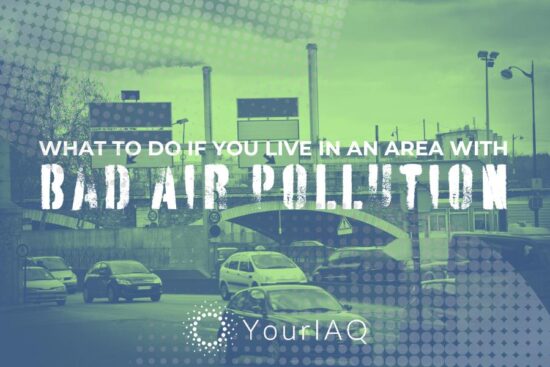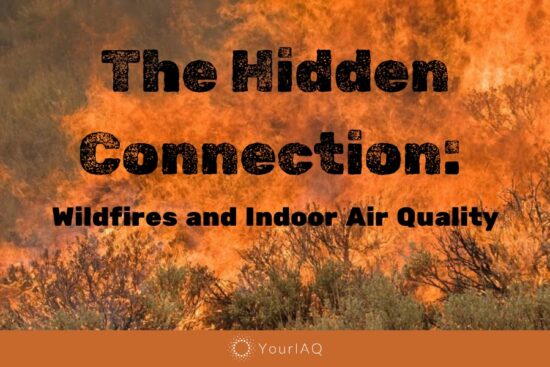
Air pollution isn’t just a concern for major cities or industrial zones—it can affect your health no matter where you live.
Recent events like the 2025 Los Angeles wildfires have shown how quickly air quality can deteriorate, even far from the source of pollution. Whether it’s wildfire smoke, vehicle emissions, or industrial pollutants, understanding the risks of poor air quality and knowing how to respond is essential.
Air pollution, a silent killer that claims 7 million lives annually, isn’t just an environmental issue; it’s a global health crisis demanding immediate action and requiring a comprehensive mitigation strategy.
In this article, we’ll break down what you need to know—and do—if you’re living in an area with bad air pollution.
9 Ways to Stop Air Pollution
1. Identify Sources of Common Air Pollutants
“Air pollution is not just an outdoor problem. The air inside our homes and offices can be more polluted than the air outside,” states the Environmental Protection Agency (EPA). A variety of pollutants contribute to this pervasive issue, each originating from multiple sources and posing significant health risks:
- Particulate Matter (PM2.5 and PM10): Produced by vehicle emissions, industrial processes, construction activities, and even natural sources like wildfires.
- Nitrogen Dioxide (NO2): Emitted from burning fuels, such as in vehicles, power plants, and industrial facilities.
- Carbon Monoxide (CO): Originates from incomplete combustion in vehicles, heaters, and stoves.
- Sulfur Dioxide (SO2): Produced by burning fossil fuels at power plants and industrial facilities.
- Volatile Organic Compounds (VOCs): Emitted from a variety of sources, including paints, cleaning supplies, and pesticides.
- Ground Level Ozone (O3): Formed when pollutants emitted by cars, power plants, industrial boilers, refineries, and chemical plants react with sunlight.
These pollutants not only affect our respiratory and cardiovascular systems but also contribute to a range of health problems, from asthma attacks to chronic obstructive pulmonary disease. Furthermore, they play a significant role in exacerbating climate change.
Understanding these sources and effects is crucial in devising effective strategies to combat air pollution. To stop air pollution, it becomes clear that addressing these sources directly leads to significant improvements in both indoor and outdoor air quality.
Related reading: The Threatening 13: Most Common Indoor Air Pollutants According to the EPA
2. Understand the Air Quality Index (AQI) and Real-Time Monitoring
The AQI is a simple way to communicate the level of air pollution in a given area. It’s like a report card for the air you breathe, ranging from “good” to “hazardous.” The index focuses on five key pollutants: ozone, particulate matter (PM2.5 and PM10), carbon monoxide, sulfur dioxide, and nitrogen dioxide. Each pollutant has its own health concerns, and the AQI reflects their combined impact.
Interpreting the AQI:
| AQI Range | Description | Health Concerns | Recommendations |
| 0-50 | Good | No special precautions needed | Enjoy outdoor activities! |
| 51-100 | Moderate | Mild symptoms for sensitive individuals | Consider reducing outdoor activity, especially for prolonged periods. |
| 101-150 | Unhealthy for Sensitive Groups | Aggravated symptoms for individuals with heart or lung disease, older adults, and children | Consider reducing outdoor activity and consult your doctor if you experience symptoms. |
| 151-200 | Unhealthy | Everyone may begin to experience health effects | Limit outdoor activity and stay indoors as much as possible. |
| 201-300 | Very Unhealthy | Serious health effects, especially for sensitive individuals | Avoid outdoor activity and stay indoors with all windows and doors closed. Consider using an air purifier. |
| 301-500 | Hazardous | Health emergency | Stay indoors, avoid all outdoor activity, and seek medical attention if necessary. |
Finding Reliable Resources for Real-Time Monitoring:
- Government Agencies: Many countries and states have their own environmental protection agencies that provide real-time air quality data. For example, in the United States, the Environmental Protection Agency (EPA) offers AirNow.gov, which allows you to find your local AQI readings and forecasts.
- Air Quality Apps: Several mobile apps and websites offer real-time AQI data and forecasts for specific locations. Popular options include Plume Labs, Air Matters, and IQAir.
- Local News and Weather Reports: Many news outlets and weather forecasts now include air quality information in their reports.
See more: What Is an Air Quality Alert and Why Does It Matter?
3. Minimize Outdoor Exposure During High Pollution Days
Living in an area with fluctuating air quality can feel like playing air quality roulette. By strategically minimizing your exposure during high-pollution days, you significantly reduce your health risks and breathe easier. Here’s how:
Strategize Your Outdoor Adventures
Check air quality forecasts like AirNow.gov or your local weather app and schedule outdoor activities for low-pollution days (AQI 0-50) whenever possible. Opt for early mornings or evenings when pollution levels often dip.
When venturing out, prioritize areas with lower pollution levels, like parks further from major roads or green spaces with dense vegetation. A 2022 study revealed that “Dense vegetation in the park showed a stable PM2.5 mitigation effect throughout the monitoring year and a strong ability to provide cleaner air under severe PM2.5 pollution.”
| ALWAYS REMEMBER
Stay indoors when the AQI rises above 100, especially if you have respiratory concerns. Individuals with conditions like asthma, COPD, or chronic bronchitis have hyperactive airways that are more susceptible to irritation and inflammation from air pollutants. |
Mask Up Wisely
Ditch the cloth mask when pollution levels soar. Opt for a well-fitted N95 respirator that effectively filters out fine particulate matter (PM2.5) responsible for most health risks.
Ensure your N95 respirator creates a snug seal around your nose and mouth. Perform a fit check by covering the mask with your hands and exhaling forcefully. If air leaks out, adjust the straps or choose a different size.
Go further: Clean Air Centers: A Promising Solution for Indoor Air Quality?
Tip:
Extended mask use requires comfort. Look for N95 respirators with features like adjustable head straps, nose bridges, and valves to ease breathing. The Center for Disease Control and Prevention has a guide on selecting respirators for public use.
4. Protect Vulnerable Populations
While air pollution affects everyone, some individuals are particularly susceptible to its harmful effects. Protecting these vulnerable populations requires specific considerations and tailored strategies. Let’s dive into what you can do to safeguard their health during high-pollution days:
Children:
Children’s lungs are still developing, making them more vulnerable to damage from air pollutants. The United Nations Children’s Fund (UNICEF) reports that air pollution is responsible for one in every eight childhood deaths globally, highlighting the need for special protection for younger individuals.
Here’s what you can do:
- Limit Outdoor Exposure: Prioritize indoor activities for children. Opt for playdates indoors and engage in creative activities.
- Pay Attention to Symptoms: Be mindful of coughing, wheezing, or difficulty breathing, which may indicate irritation or worsening asthma. Consult your pediatrician if symptoms persist.
- Lead by Example: Talk to your children about air pollution and involve them in air quality checks. Empower them to make healthy choices like choosing active indoor play on high-pollution days.
Pregnant Women:
Air pollution exposure harms both the mother and the developing baby, increasing risks of low birth weight, respiratory problems, and other complications. Studies have shown a link between prenatal exposure to air pollution and increased risk of low birth weight and respiratory problems in newborns.
To protect them:
- Minimize Outdoor Exposure: Similar to children, prioritize staying indoors during high-pollution days. Wear an N95 respirator for essential outdoor activities.
- Consult Your Doctor: Discuss air quality concerns with your doctor and receive personalized advice regarding activity limitations and additional precautions.
- Invest in Air Purification: A HEPA air purifier significantly improves indoor air quality at home, providing a cleaner environment for both mother and baby.
The Elderly:
The elderly are often more susceptible to respiratory issues, and air pollution can exacerbate these conditions. Here’s some advice:
- Reduce Strenuous Activity: Avoid strenuous outdoor activities on days with high pollution, opting for gentle walks or light exercise indoors.
- Monitor Health: Pay close attention to breathing difficulties, chest tightness, or fatigue, which may indicate health concerns. Consult your doctor if symptoms worsen.
- Stay Informed: Encourage loved ones to check air quality forecasts and share resources or alerts to raise awareness about potential risks.
5. Seal Air Leaks at Home
Creating an airtight environment is essential for maintaining good indoor air quality, particularly in areas with high outdoor pollution. Sealing cracks and gaps around windows, doors, and other entry points with weatherstripping or caulk prevents polluted air from entering, thus improving the air you breathe indoors.
It is found that this simple step reduces indoor air pollution by up to 50%, showcasing its effectiveness in protecting home environments.
6. Support Clean Air Initiatives
“Renewable energy sources like solar and wind emit no greenhouse gases during operation and are the cleanest, most viable solution to prevent environmental degradation,” says the International Renewable Energy Agency (IRENA). This statement highlights the critical role clean energy plays in combating air pollution and safeguarding our planet.
But individual action alone won’t solve this global challenge. Get involved with local advocacy groups or campaigns pushing for stricter air quality regulations and cleaner energy sources. Supporting clean energy initiatives is crucial for reducing global reliance on polluting power plants.
Fun fact: The Clean Air Task Force and Earthjustice are leading organizations advocating for clean air policies.
7. Reduce Your Carbon Footprint
Transitioning to public transportation, cycling, or walking not only benefits your health but also significantly reduces your carbon footprint. According to the EPA, transportation accounts for the largest share of air pollution in the United States, underscoring the profound impact individual transport choices can have on air quality. By opting for these environmentally friendly modes of transport, individuals play a crucial role in decreasing the overall demand for fossil fuels and, consequently, reducing air pollution.
Similarly, the adoption of energy-efficient appliances emerges as another powerful strategy for combating environmental pollution. The Department of Energy (DOE) asserts that “energy efficiency is one of the easiest and most cost-effective ways to combat pollution, improve the competitiveness of our businesses, and reduce energy costs for consumers.” By embracing energy-efficient practices, we not only lessen our dependence on fossil fuels but also contribute to a significant reduction in pollution and greenhouse gas emissions.
This approach aligns with the broader goal of sustainable living, as emphasized by the World Meteorological Organization (WMO), which notes that “reducing emissions of greenhouse gases through better transport, food, and energy-use choices result in improved health, particularly through reduced air pollution.”
Implementing policies and personal choices aimed at emissions reduction is thus pivotal for mitigating the effects of climate change and enhancing air quality for future generations.
See also: Understanding the Relationship Between Climate Change and Indoor Air Quality
7. Join Community Gardens & Urban Greening Efforts
Trees and plants serve as crucial allies in the fight against air pollution, absorbing harmful pollutants such as ozone and particulate matter. Engaging in community gardens or participating in tree-planting efforts not only enhances local green spaces but also contributes to air quality improvement, with a single large tree capable of supplying oxygen for up to four people. Small actions, like cultivating a balcony garden, also play a part in creating cleaner, greener environments.
To further this impact, advocating for policies that promote urban greening initiatives is essential. Supporting measures like tree protection ordinances and funding for community gardens foster the expansion of green spaces within urban areas. By sharing the myriad benefits of urban greening with others and encouraging community involvement, each of us helps cultivate a more sustainable and healthier urban ecosystem.
8. Spreading the Word on Air Pollution Prevention
“Education plays a critical role in addressing environmental challenges,” according to the United Nations Environment Programme (UNEP). Raising awareness about the Air Quality Index (AQI) and pollution sources empower communities to take action.
Share information about air pollution’s sources, health impacts, and solutions with friends, family, and neighbors. Share credible air quality data, news articles, and advocacy campaigns on social media platforms.
Talk to local schools and organizations about offering educational programs on clean air. Encourage discussions and inspire others to take action.
Conclusion: A Collective Commitment to Clean Air
Addressing air pollution is a shared responsibility that requires informed and concerted efforts. By leveraging the insights of experts and organizations, adopting sustainable practices, and advocating for policies that prioritize the environment and public health, significant progress can be made.
“Every individual’s contribution to clean air matters,” says Dr. Maria Neira of the WHO. “Collectively, we can make a substantial impact on our planet’s health and our own well-being.”
Frequently Asked Questions
Why is air pollution so detrimental to both future generations and climate change?
Air pollution contributes to health problems and premature deaths, impacts ecosystems, and exacerbates climate change, affecting future generations’ well-being and the planet’s sustainability.
What city in the United States has the worst air pollution?
Los Angeles, California, frequently tops the American Lung Association’s list due to its high ozone and particulate matter levels. A YourIAQ analysis found Houston, Texas, as one of the cities with the highest potential for indoor air pollution.
What is one type of air pollution that was phased out in the United States because of the Clean Air Act?
Lead in gasoline was phased out, significantly reducing lead pollution in the air.
Should people be physically active outdoors on smog alert days?
No, it’s advisable to limit outdoor physical activity on smog alert days to reduce exposure to harmful pollutants.
Can air filters completely remove all air pollution?
No, air filters, even HEPA filters, cannot remove all pollutants. However, they significantly reduce airborne particles that contribute to health problems.
Should I wear a mask all the time outdoors?
Not necessarily. For optimal protection during high-pollution days, wear a well-fitted N95 respirator.
What lifestyle changes can make the biggest impact?
Opting for public transportation, cycling, or walking instead of driving, reducing energy consumption at home, and choosing energy-efficient appliances have a significant collective impact on air quality.
What solutions have been effective in reducing air pollution in large cities?
Implementing emissions controls on vehicles and industry, promoting public transit, cycling, and walking, and increasing green spaces have proven effective.
What can I do to advocate for clean air?
Join local clean air advocacy groups, support organizations pushing for stricter regulations, and contact your elected officials to voice your concerns about air quality.






